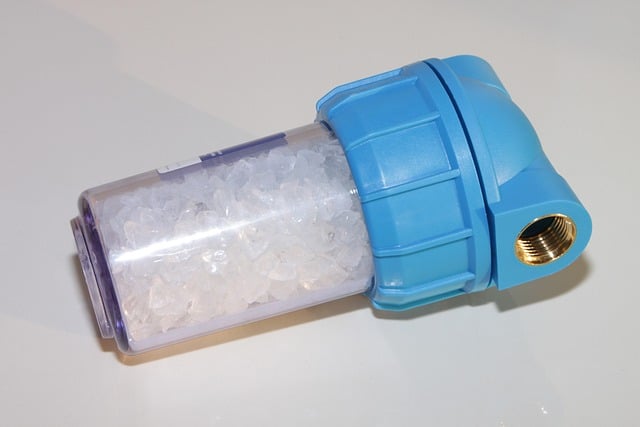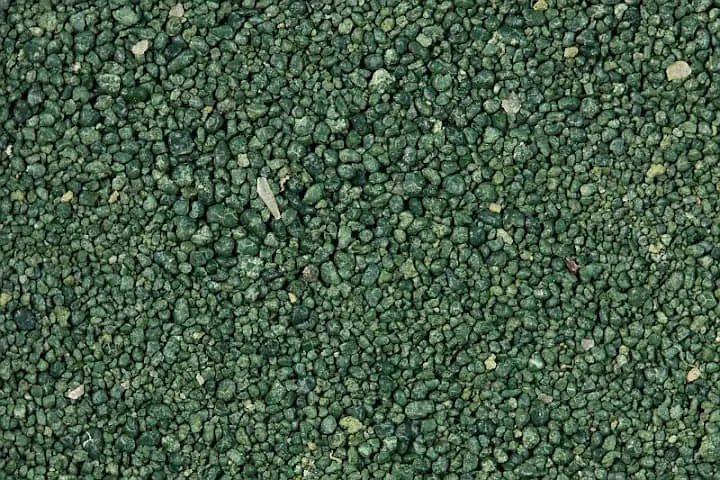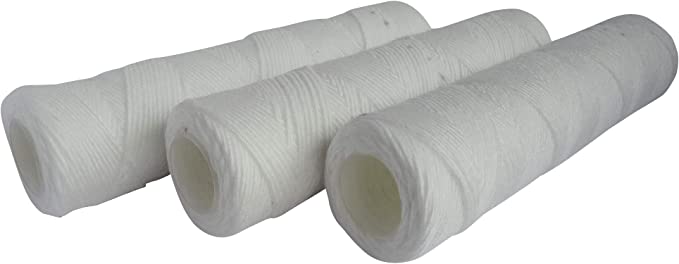Iron in well water can cause a range of issues, including staining of clothes, dishes, and surfaces, as well as a metallic taste and odour. Additionally, high levels of iron can contribute to the corrosion of pipes and fixtures, leading to damage and decreased lifespan of plumbing systems. There are several effective methods for removing iron from well water, including aeration, water softeners, oxidizing/ozone filters, chemical oxidation, greensand filtration. There are other methods that can be fit for purpose but each has its own significant drawback including cartridge filters, ceramic filters, charcoal filters and reverse osmosis. Each of these methods has its own advantages and disadvantages and can vary in cost. The challenges posed by efficiently removing iron from well water were the inspiration behind this article, where we will discuss the cheapest ways to remove iron from well water including how each process works, the best situation for each, advantages, disadvantages and approximate cost.

Aeration, water softeners, oxidizing filters, chemical oxidation, greensand filtration are the cheapest and most effective methods for removing iron from well water. The efficiency of removing iron from well water is affected by the iron concentration, pH levels, flow rates and other contaminants.
1. Water Softening:
Water softeners can be an effective method for removing iron from well water. While water softeners are primarily designed to remove hard minerals, such as calcium and magnesium, they can also help remove dissolved iron from water.

How it works:
Water softeners work by exchanging ions in the water, primarily calcium and magnesium, with sodium ions. The ion exchange resin inside the water softener captures calcium and magnesium ions and releases sodium ions, effectively softening the water. In the case of iron, the ion exchange resin can also capture dissolved iron ions and replace them with sodium ions. However, the effectiveness of water softeners in removing iron varies depending on the iron’s concentration and the type of iron present in the water.
What it’s most suited to:
Water softeners are most suited to scenarios where well water has low to moderate levels of dissolved iron, typically less than 3 mg/L. Additionally, water softeners are effective at removing ferrous iron, which is not visible in the water, but is a significant source of staining and metallic taste. For higher levels of iron or if ferric iron is present in the water, water softeners may not be effective, and other water treatment methods should be considered.
Advantages:
One of the main advantages of using a water softener for iron removal is its dual purpose of removing hard minerals and iron from water. It is a common water treatment method, and most households have a water softener already installed. Additionally, water softeners are relatively low maintenance and can be installed by a qualified plumber or water treatment specialist.
Disadvantages:
Water softeners may not be effective at removing high levels of iron, and regular maintenance is required to ensure optimal performance, such as regular resin cleaning and replacement. Additionally, using a water softener for iron removal can increase the sodium content in the water, which can lead to a strange taste of the water and may not be suitable for individuals on low-sodium diets.
Approximate Cost:
A basic water softener system can range from $300-$1,000, depending on the system’s size and complexity. More extensive systems may cost up to $2,000, depending on the number of wells and water quality requirements.
2. Ozone/Oxidation Filters:
Ozone filters are a common and effective method for removing iron from well water.

How they work:
Ozone filters work by oxidizing the dissolved iron in the water from a ferrous state to a ferric state. The ferric iron is then trapped by the filter media and removed from the water, resulting in clear, iron-free water.
What they’re most suited to:
Oxidation filters are best suited to scenarios where well water has high levels of dissolved iron, typically greater than 3 mg/L. Additionally, oxidation filters are effective at removing both ferrous and ferric iron, making them a suitable option for households with high iron levels.
Advantages:
Oxidation filters can remove other contaminants, such as sulfur, manganese, and hydrogen sulfide, which are often present in well water. Oxidation filters are also low maintenance and do not require chemicals, making them a popular choice for well water treatment.
Disadvantages:
Oxidation filters are not effective in removing bacteria or viruses from water, and they require regular maintenance to ensure optimal performance. Additionally, oxidation filters can increase water usage and may not be suitable for households with low water pressure.
Approximate Cost:
A basic oxidation filter system can range from $700-$1,000, depending on the system’s size and complexity. More extensive systems may cost up to $3,000, depending on the number of wells and water quality requirements.
3. Aeration Filters:
Aeration is a water treatment method that can effectively remove iron from well water. Aeration works by introducing air into the water, which converts the dissolved ferrous iron into a solid form that can be easily filtered out.

How it works:
In the aeration process, well water is pumped into a tank or vessel where air is introduced into the water. As the water and air mix, the ferrous iron is oxidized into ferric iron, which forms a solid particle that can be filtered out of the water. Once the iron has been oxidized, the water is filtered through a media bed, such as sand or activated carbon, to remove the iron particles.
What it is most suited to:
Aeration is most suited to scenarios where well water has high levels of dissolved iron, typically in the range of 3-10 mg/L. It is particularly effective at removing ferrous iron, which is not readily removed by conventional filters. Aeration systems can be installed on the wellhead or in the house, depending on the specific requirements.
Advantages:
One of the main advantages of aeration is that it is a relatively simple and low-cost method for removing iron from well water. It does not require any chemicals or specialized equipment and can be installed by a qualified plumber or water treatment specialist. Additionally, aeration does not produce any waste or byproducts, making it an environmentally friendly option for iron removal.
Disadvantages:
Aeration is not effective at removing other contaminants, such as manganese or hydrogen sulfide, that may also be present in well water. In addition, aeration systems require regular maintenance to ensure optimal performance, such as replacing media beds and cleaning the air injection system. Finally, aeration may not be effective at removing high levels of iron or in scenarios where the water has a low pH or high levels of dissolved oxygen.
Approximate Cost:
A basic aeration system for a household can range from $500-$2,500, depending on the system’s size and complexity. More extensive systems may cost up to $10,000, depending on the number of wells and water quality requirements.
Greensand Filtration:
Greensand filtration is a widely used method for removing iron and other impurities from well water. Greensand filtration uses a naturally occurring mineral called glauconite, which is found in certain deposits of greensand. Greensand is a type of sandstone that contains a high concentration of glauconite.

How it works:
The process of greensand filtration involves passing well water through a bed of greensand. As the water flows through the greensand, the glauconite mineral reacts with dissolved iron and other impurities, trapping them in the filter bed. The filtered water then passes through the filter media and is discharged as clear, clean water.
What it’s most suited to:
Greensand filtration is most suited to scenarios where well water contains high levels of dissolved iron, typically greater than 3 mg/L. Additionally, greensand filtration is effective at removing other impurities, such as manganese and hydrogen sulfide, which are often present in well water.
Advantages:
Greensand filtration is also a low-maintenance option, requiring only periodic backwashing to clean the filter bed. Additionally, greensand filtration does not require chemicals, making it a popular choice for well water treatment.
Disadvantages:
Greensand filtration can be relatively expensive, and the filter bed requires periodic replacement or regeneration to maintain optimal performance. Additionally, greensand filtration can be ineffective if the well water contains high levels of organic matter, which can interfere with the filter media’s ability to remove impurities.
Approximate Cost:
The cost of greensand filtration for iron removal can vary depending on the specific requirements and installation location. A basic greensand filtration system can range from $1,000-$3,000, depending on the system’s size and complexity. More extensive systems may cost up to $10,000, depending on the number of wells and water quality requirements.
Chemical Oxidation:
Chemical oxidation involves the use of chemical oxidants, such as chlorine or hydrogen peroxide, to oxidize the iron and convert it into a form that can be filtered out. Chemical oxidation is most effective when dealing with dissolved iron, which is not visible to the naked eye and is difficult to remove through other methods.

How it works:
Chemical oxidation works by adding the chemical oxidant to the well water, which reacts with the dissolved iron to form solid particles. These particles can then be filtered out using a sediment filter or other type of filtration system. The effectiveness of chemical oxidation depends on the level of iron in the water and the amount of oxidant used.
What it’s most suited to:
Chemical oxidation is most suited to scenarios where well water contains high levels of dissolved iron, typically greater than 5 mg/L. It is also effective at removing other impurities, such as manganese and hydrogen sulfide. Chemical oxidation is a relatively low-maintenance option, requiring periodic backwashing or cleaning of the filtration system.
Advantages:
One of the primary advantages of chemical oxidation is that it is a relatively quick and easy process, and the results are typically visible within a short period of time. Additionally, chemical oxidation can be used in combination with other water treatment methods to achieve even better results.
Disadvantages:
Chemical oxidants can be expensive, and the process requires the use of chemicals that can be hazardous if not handled properly. Additionally, chemical oxidation can be less effective if the well water contains high levels of organic matter, which can interfere with the oxidation process.
Approximate Cost:
A basic chemical oxidation system can range from $1,000-$3,000, depending on the system’s size and complexity the trick with chemical oxidation is the high ongoing costs involved with the process, which pushes it to the most expensive solution on the list.
Honourable Mention: Cartridge filters
An important point to note:
It is important to note that cartridge filters may not be sufficient for removing high levels of iron from well water. In these cases, it may be necessary to use a combination of iron removal methods, such as aeration or oxidation, in addition to a cartridge filter.

How they work:
Cartridge filters work by physically trapping the iron particles in the filter media as the water passes through. The filter media can vary but typically consist of activated carbon, ceramic, or polypropylene.
What are they most suited for:
Cartridge filters are most suited to scenarios where the iron concentration is relatively low and the water is not highly contaminated with other contaminants. These filters are often used as a pre-treatment method for other iron removal systems, such as aeration or oxidation filters.
Advantages:
One positive aspect of cartridge filters is their affordability. They are generally less expensive than other iron removal systems and are easy to install and replace. Additionally, they do not require electricity or special chemicals to operate, making them a low-maintenance option.
Disadvantage:
However, a negative aspect of cartridge filters is their limited capacity. Depending on the filter media used, the filter may need to be replaced frequently, especially if the iron concentration is high. This can result in ongoing maintenance costs and potential disruptions to water flow if the filter becomes clogged.
Approximate Cost:
The price range for cartridge filters can vary widely depending on the brand, size, and filter media used. Basic activated carbon filters can be purchased for as little as $10, while higher-end ceramic filters can cost upwards of $50. Replacement filters may need to be purchased every few months to a year, depending on usage and water quality.
Other less effective methods:
Charcoal filters, ceramic filters, and reverse osmosis all can technically remove iron from the water they each have distinct disadvantages that make them unsuitable for long-term or iron-specific usage.
Charcoal filters and ceramic filters are both effective at removing insoluble iron, however, they are not effective at removing all types of iron, such as colloidal iron, which requires a more specialized filtration system like those mentioned above.
While reverse osmosis (RO) is an effective method for removing iron from water, the membrane used in RO systems can quickly become clogged by iron particles both soluble and insoluble. This can cause reduced water flow and necessitate frequent and expensive membrane replacements. For this reason, RO is generally not the preferred method for removing iron from well water unless some sort of specialized pre-treatment is utilized like those above and the well water has additional contaminants that can need to be removed by RO.


